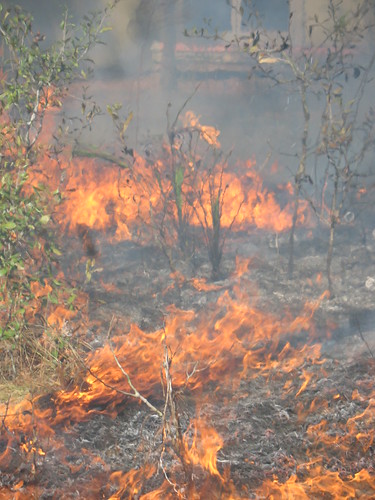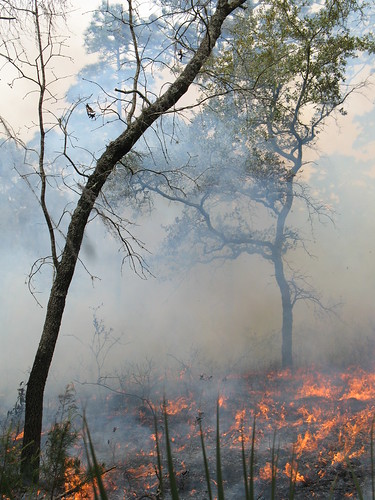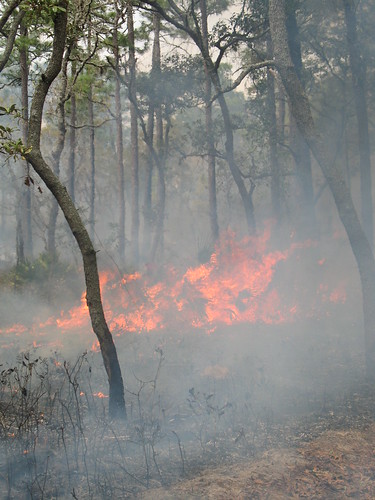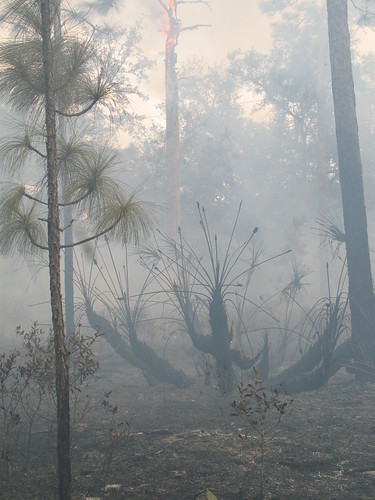I didn't take any photos today. My office was just not that inspiring and I don't think its wise to take photos while driving. Here are some leftovers from yesterday's prescribed fire.




Thought of the Day #90
When I have talked about prescribed fire before, I usually tell you that we keep the fire low and slow. It creeps through the underbrush slowly. Sometimes, when young hardwoods need to be thinned, we light the area so that we get a hotter and faster fire. There are also times when the fire finds a pocket of nice dry fuel or is pushed by a gust of wind. Sometimes the fire climbs higher than we want it, but we always have safeguards in place to deal with those unexpected flare ups. In the photo above, there is a snag on fire. A snag is a large, dead tree. These snags are important for wildlife habitat, but dangerous for firefighters. The snags catch fire easily and can burn unnoticed until they fall. The snag pictured above was burning near the fireline. If it continued to burn, it could have dropped burning embers into the yard of a nearby residence or it could have fallen very close to that residence which was outside of the burn zone. We sprayed water on it to see if we could extinguish the fire. As we suspected though, the tree was burning through its core. The fire had spread through all of the old, damaged wood. We dropped the tree to ensure that the nearby structure was safe and that the tree would not spread fire to areas that were unburned.
No comments:
Post a Comment